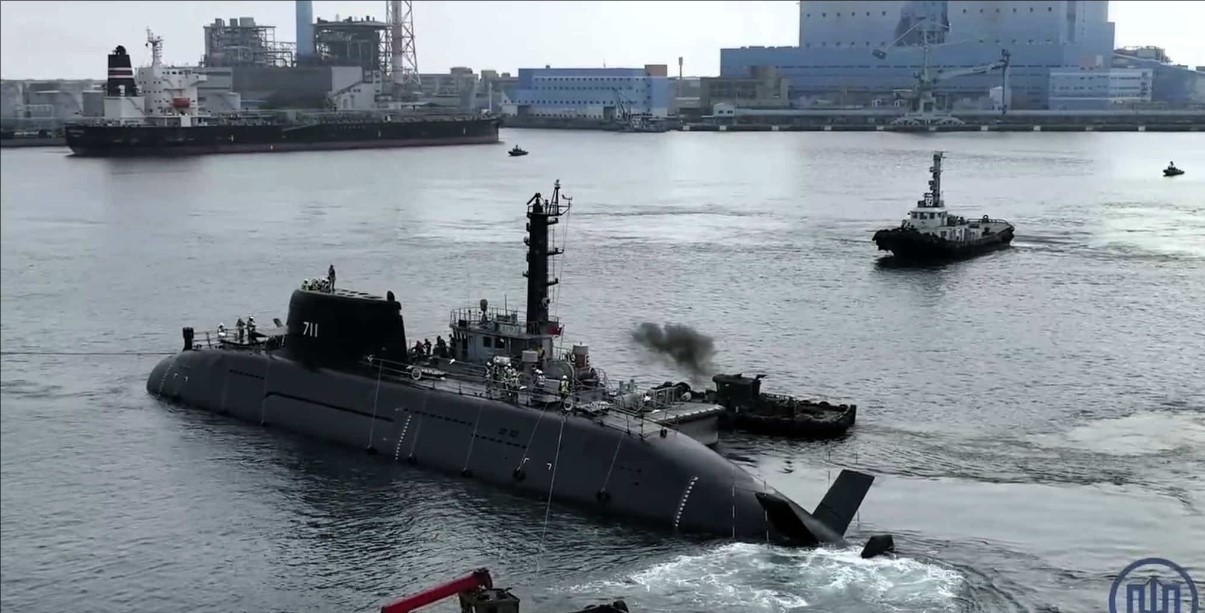Taiwan’s Hai Kun Submarine Set for Sea Trials After Optronic Mast Delay

Delay in optronic mast delivery impacts Taiwan's Hai Kun submarine project, highlighting challenges in modernizing military capabilities amid regional tensions.
On May 4, 2024, Taiwanese media outlet LTN reported that U.S. defense company L3 Harris had not yet delivered the optronic masts for Taiwan's Hai Kun submarine. The delivery, initially scheduled for January 2024, was delayed, impacting the submarine's timeline. The first-in-class Hai Kun submarine was launched in late February 2024.
The Harbor Acceptance Test (HAT) for the Hai Kun was expected to be completed by the end of April 2024. An anonymous source quoted by LTN noted that Admiral Tang Hua, head of Taiwan's navy, was very cautious and dedicated to the indigenous submarine project. Admiral Tang emphasized that the Hai Kun must pass all tests and be approved step-by-step, asserting that the navy would not accept the submarine if it failed to complete and qualify all HAT and subsequent Sea Acceptance Test (SAT) items.
There were rumors about the resignation of Admiral (ret.) Huang Shu-kuang, the National Security Council's (NSC) ‘submarine tsar’. This resignation could have negatively impacted the production of follow-on submarines. However, Admiral Huang clarified that his resignation was due to national security concerns and aimed to halt political disputes that could harm the nation's defense capabilities. The transition team for Taiwan's 16th president and vice president later confirmed that Admiral Huang would remain as an advisor to the NSC.
On May 17, LTN quoted an anonymous military source stating that, after a four-month delay, one set of optronic masts for the Hai Kun had arrived in Taiwan, with the second set expected to arrive a week later. With this delivery, all systems for the Hai Kun were in place. The submarine was scheduled to begin its Sea Acceptance Test at the end of May, following the installation and testing of the optronic masts and batteries. Admiral Huang will lead the Indigenous Defense Submarine program team and oversee critical SAT items, including firing training torpedoes and examining combat systems performance. CSBC chairman Cheng Wen-lon will also be aboard to witness the SAT items.
Taiwan’s Current Submarine Force
Aside from the advanced yet-to-be-delivered Hai Kun, Taiwan’s navy (ROC Navy) currently operates four submarines:
- ROCS Hai Shih (Sea Lion), SS-791 and ROCS Hai Pao (Seal), SS-792 : These World War II vintage submarines were transferred from the U.S. in the 1970s. Both underwent Greater Underwater Propulsion Power Program (GUPPY) conversions and are unofficially referred to as Guppy class in Taiwan. They remain operational and reportedly capable of combat.
- Chien Lung-class (Hai Lung-class or Sea Dragon class): This class includes ROCS Hai Lung (Sea Dragon), SS-793 and ROCS Hai Hu (Sea Tiger), SS-794, purchased from the Netherlands in the 1980s. They are equipped with AEG SUT 264 heavyweight torpedoes produced under license from Indonesia in the 1980s, Harpoon missiles purchased from the U.S. in 2008, and MK-48 torpedoes acquired from the U.S. in 2017.
The Hai Kun project is part of Taiwan's broader strategy to modernize its military capabilities amid increasing regional tensions. The Indigenous Defense Submarine program aims to enhance Taiwan's defense and deterrence capabilities, ensuring the country can defend itself against potential threats.
The delay in delivering key components such as the optronic masts has highlighted challenges in the complex process of developing and deploying advanced military technologies. However, the successful installation and testing of these components will be crucial for the Hai Kun to meet its operational requirements.
As Taiwan continues to enhance its naval capabilities, the Hai Kun and subsequent indigenous submarines will play a vital role in safeguarding the nation's maritime interests and maintaining regional stability.


